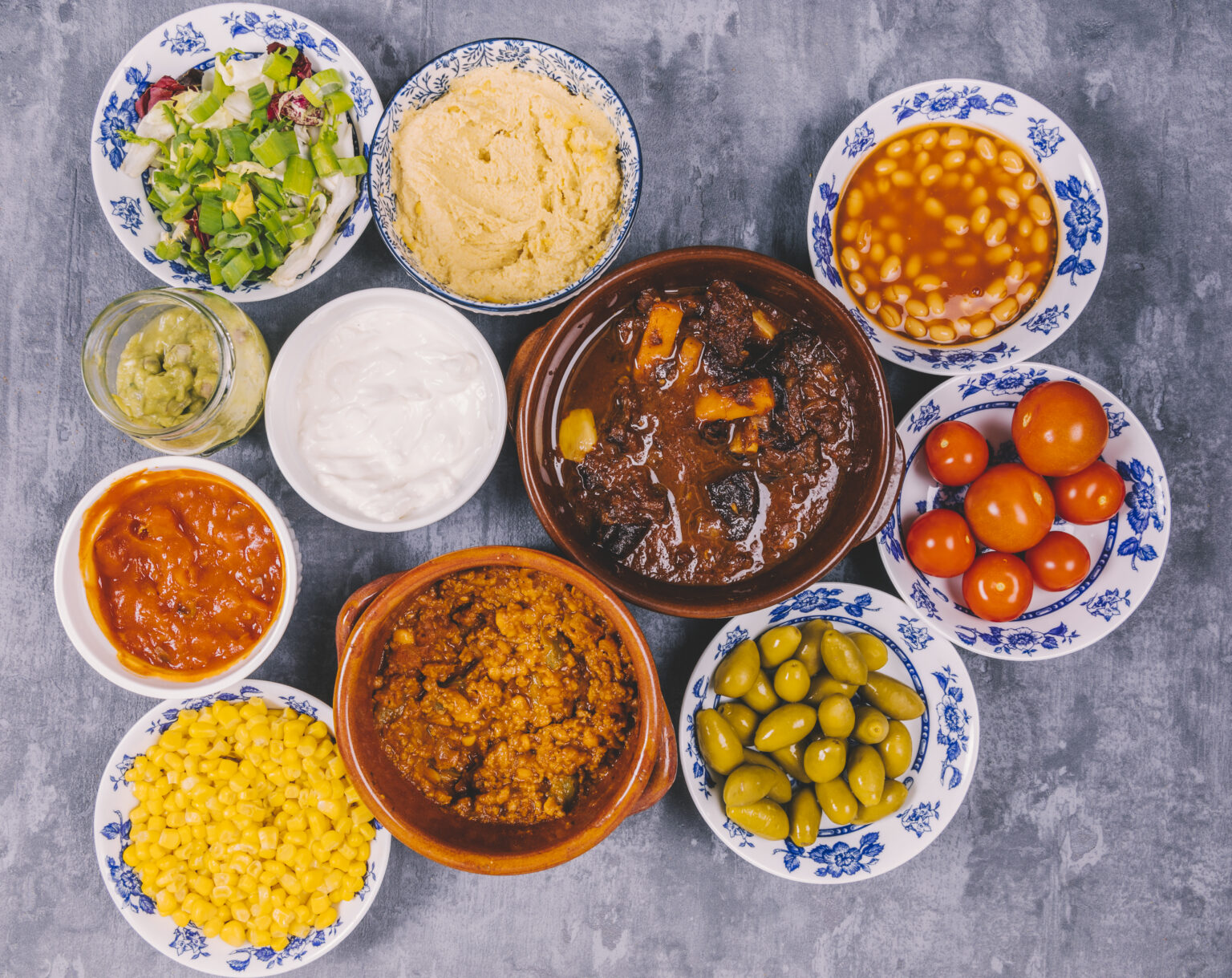North African tagines are renowned for their vibrant colors and rich flavors. Tagine refers to both the traditional cooking vessel, which is a shallow clay pot with a conical lid, as well as the dishes cooked within it. The slow-cooking method employed in tagine recipes allows the flavors to meld together, resulting in aromatic and tender dishes that are a hallmark of North African cuisine. Here, we explore the vibrant colors and tastes that make North African tagines so enticing.
- Colors: North African tagines are a feast for the eyes, as they showcase an array of vibrant colors that come from the diverse ingredients used. Bright reds, yellows, greens, and oranges are often present, thanks to the inclusion of vegetables, spices, and herbs. Ingredients such as tomatoes, bell peppers, carrots, squash, and preserved lemons contribute to the visually stunning nature of tagines.
- Spices and Aromatics: North African cuisine is renowned for its robust and aromatic spice blends. Common spices used in tagines include cumin, coriander, ginger, cinnamon, turmeric, paprika, and saffron. These spices lend a warm and fragrant aroma to the dish, while also infusing the ingredients with layers of flavor.
- Sweet and Savory Flavors: North African tagines often strike a delightful balance between sweet and savory flavors. It is not uncommon to find a combination of ingredients such as dried fruits, honey, and aromatic spices with savory components like meat, poultry, or legumes. The harmonious interplay of these flavors creates a unique and memorable taste experience.
- Slow-Cooked Tender Meats: Tagines frequently feature tender cuts of meat, such as lamb, beef, or chicken. The slow-cooking process allows the meats to become incredibly tender and succulent, while absorbing the flavors of the spices and other ingredients in the tagine. The result is a melt-in-your-mouth texture that is deeply satisfying.
- Preserved Lemons and Olives: Preserved lemons and olives are common ingredients in North African tagines, particularly in Moroccan cuisine. Preserved lemons add a tangy and slightly salty flavor that balances the richness of the dish. Olives contribute a briny and earthy note, enhancing the overall taste profile.
- Couscous Accompaniment: While tagines can be enjoyed on their own, they are often served with couscous, which is a staple grain in North Africa. Fluffy and light, couscous provides a neutral base that soaks up the flavorful juices from the tagine. It acts as a perfect complement to the robust flavors of the dish.
- Fresh Herbs and Garnishes: North African tagines are often garnished with fresh herbs, such as cilantro, parsley, or mint, just before serving. These herbs add a burst of freshness and a vibrant green color to the dish, enhancing the overall visual appeal and flavor profile.
North African tagines are a culinary delight, combining an array of vibrant colors and tantalizing tastes. The combination of aromatic spices, tender meats, sweet and savory flavors, and the use of fresh herbs creates a sensory experience that reflects the rich culinary heritage of the region. Whether enjoyed in a traditional clay tagine or prepared in a modern kitchen, these dishes transport diners to the enchanting world of North African cuisine.








